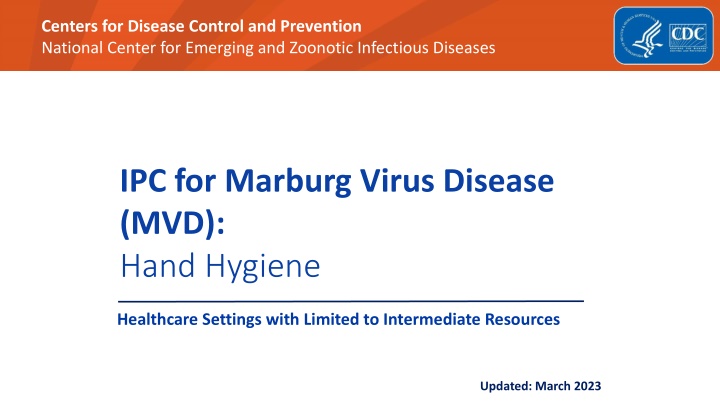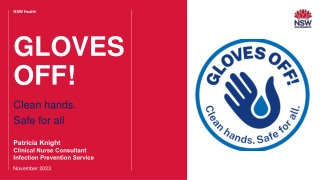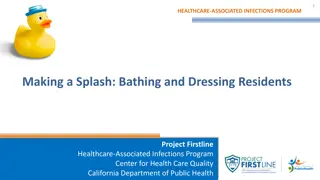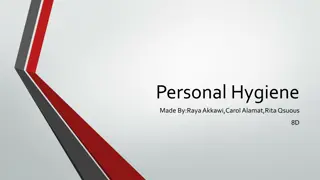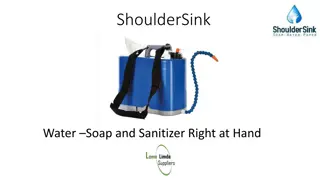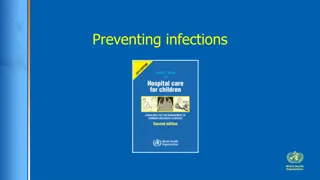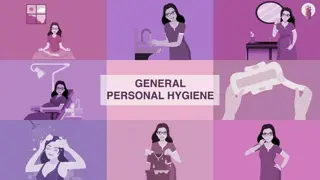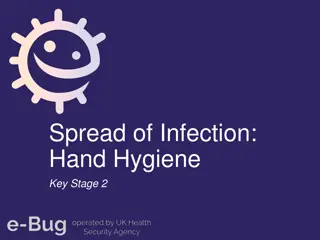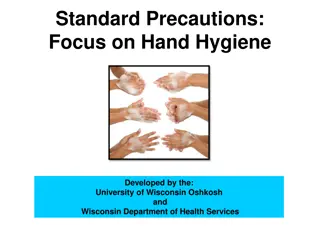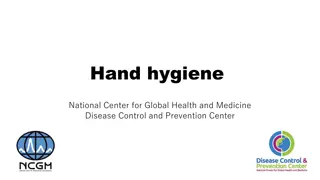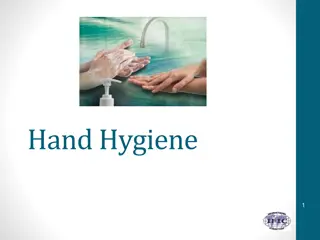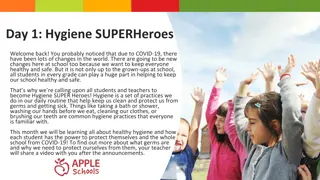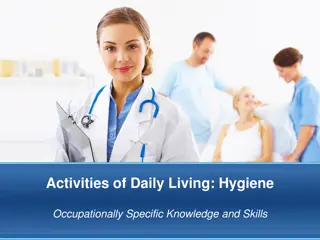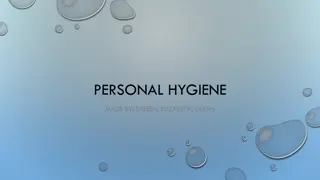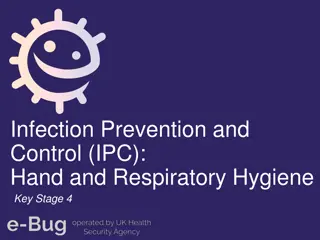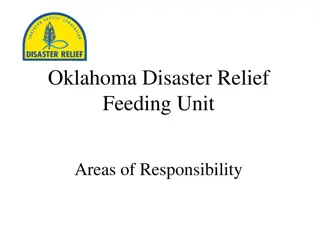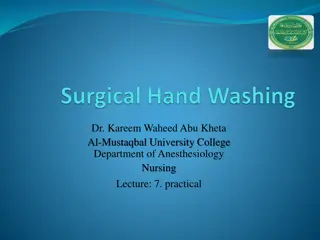Hand Hygiene in Healthcare Settings: Importance and Guidelines
Hand hygiene plays a crucial role in preventing the spread of infections like Marburg Virus Disease. This presentation covers the significance of hand hygiene, when to perform hand hygiene, considerations for using alcohol-based hand rub, and its importance in healthcare settings with limited resources.
Download Presentation

Please find below an Image/Link to download the presentation.
The content on the website is provided AS IS for your information and personal use only. It may not be sold, licensed, or shared on other websites without obtaining consent from the author.If you encounter any issues during the download, it is possible that the publisher has removed the file from their server.
You are allowed to download the files provided on this website for personal or commercial use, subject to the condition that they are used lawfully. All files are the property of their respective owners.
The content on the website is provided AS IS for your information and personal use only. It may not be sold, licensed, or shared on other websites without obtaining consent from the author.
E N D
Presentation Transcript
Centers for Disease Control and Prevention National Center for Emerging and Zoonotic Infectious Diseases IPC for Marburg Virus Disease (MVD): Hand Hygiene Healthcare Settings with Limited to Intermediate Resources Updated: March 2023
Learning Objectives Learning Objectives After this presentation, participants will be able to Explain why hand hygiene is important in the context of Marburg virus disease Describe at least 5 times when hand hygiene should be performed during the workday Describe 3 considerations to ensure good hand hygiene
Warm Warm- -up up How often do you wash your hands or clean your hands with alcohol-based hand rub during a typical day at work?
Definition: Hand Hygiene Definition: Hand Hygiene Hand hygiene is the general term used for cleaning hands, whether using soap and water, alcohol-based hand rub, or surgical hand scrub Handwash = soap + water Handrub = alcohol-based hand rub
Why Hand Hygiene? Equipment and instruments Door handles Hands Medication vials Phones Health workers, patients, and visitors
When to Perform Hand Hygiene Before After Touching patient or patient environment Performing a sterile procedure Touching patient or patient environment Touching patients body fluids Patient Care Putting on PPE Removing PPE Using PPE Performing environmental services/cleaning activities Handling waste Performing environmental services/cleaning activities Cleaning Using the toilet Blowing nose/coughing Personal Activities Preparing food or eating
Alcohol Alcohol- -Based Hand Rub (ABHR) Based Hand Rub (ABHR) Considerations: Rub for at least 20-30 seconds Use enough product to keep hands wet while rubbing (usually 3-5 mL) If hands are visibly dirty, use soap and water
Handwashing with Soap and Water Handwashing with Soap and Water Considerations: Wash long enough to complete all steps in the diagram (40+ sec) Turn tap off without contaminating hands Use single-use towels for drying or air dry
Use of Chlorine for Hand Hygiene Use of Chlorine for Hand Hygiene NOT recommendedas a routine option for hand hygiene Interim option when no other hand hygiene options are available Chlorine solutions must be: Diluted correctly Prepared daily http://cdcmuseum.org/exhibits/show/ebola/public-health/ipc/handwashing
Reflection Reflection Based on what you ve learned about hand hygiene today What are 2 things you will change about how you clean your hands while at work? What is 1 thing that could change at your facility to help make hand hygiene easier or more effective?
Key Takeaways Key Takeaways Proper hand hygiene helps protect you and your patients from infection. By protecting yourself, you also protect your community. Hand hygiene should be performed many times during the workday. To clean hands properly: - Rub/wash long enough - Use enough product - Use single use towels or air dry
Thank you! For more information, contact CDC 1-800-CDC-INFO (232-4636) TTY: 1-888-232-6348 www.cdc.gov The findings and conclusions in this report are those of the authors and do not necessarily represent the official position of the Centers for Disease Control and Prevention.
